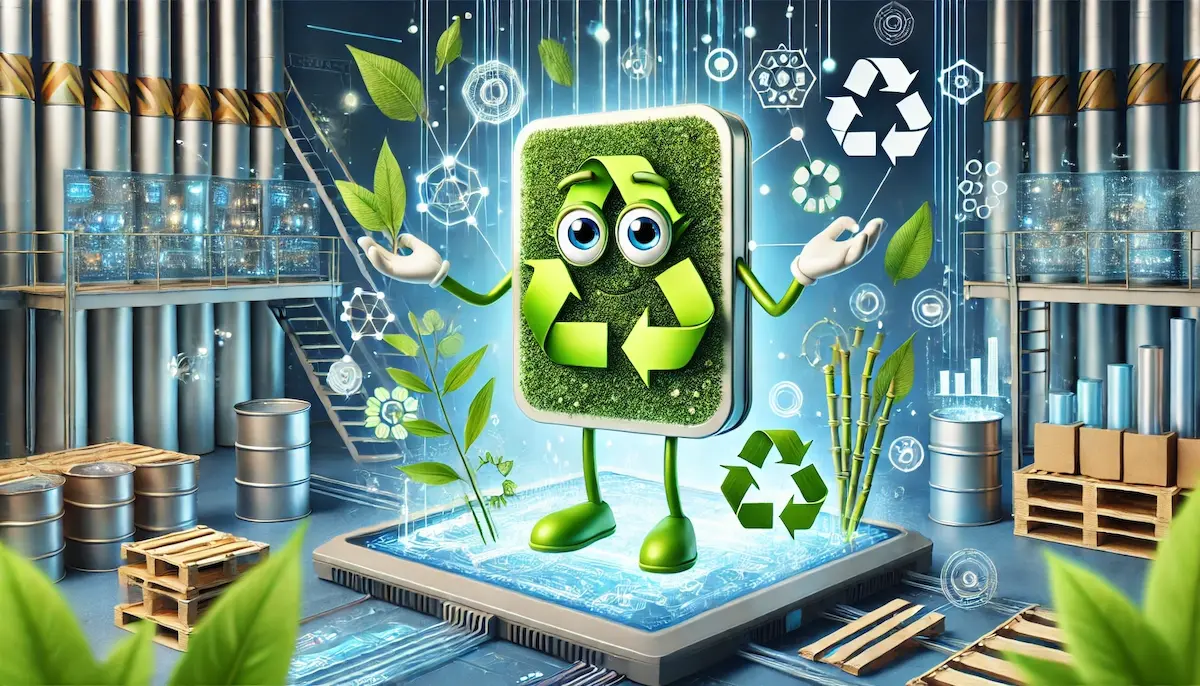Renewable materials are resources derived from natural processes that are replenished over short periods, making them sustainable alternatives to non-renewable resources like fossil fuels and minerals. These materials play a crucial role in reducing environmental impact, promoting sustainability, and supporting the transition to a circular economy.
What are Renewable Materials?
Renewable materials are those that can be naturally replenished within a human lifespan, ensuring a continuous supply without depleting natural resources. They are often sourced from plants, animals, and other natural processes. These materials can be used in various industries, including construction, packaging, textiles, and energy.
Key Types of Renewable Materials
Plant-Based Materials
Bamboo
Bamboo is a fast-growing grass that can be harvested within a few years. It is used in construction, furniture, flooring, and textiles due to its strength, flexibility, and sustainability. Bamboo’s rapid growth rate makes it an excellent renewable resource.
Hemp
Hemp is a versatile plant used for textiles, paper, biodegradable plastics, and construction materials. It grows quickly and requires minimal pesticides and fertilizers, making it an environmentally friendly crop. Hemp fibers are strong and durable, suitable for various industrial applications.
Cornstarch
Cornstarch is used to produce biodegradable plastics and packaging materials. Polylactic acid (PLA), derived from cornstarch, is a popular biodegradable plastic alternative to petroleum-based plastics. Cornstarch-based products decompose more quickly, reducing plastic pollution.
Wood
Sustainably sourced wood is a renewable material used in construction, furniture, paper, and packaging. Sustainable forestry practices ensure that trees are replanted and forests are managed to maintain biodiversity and ecosystem health.
Animal-Based Materials
Wool
Wool, obtained from sheep, is a renewable fiber used in textiles and insulation. It is biodegradable, durable, and has natural insulating properties. Sheep can be sheared annually, providing a continuous supply of wool.
Silk
Silk is a natural protein fiber produced by silkworms. It is used in luxury textiles and clothing due to its softness, strength, and lustrous appearance. Sustainable silk production focuses on ethical practices and minimal environmental impact.
Other Natural Materials
Natural Rubber
Natural rubber is harvested from the latex of rubber trees. It is used in various products, including tires, footwear, and industrial goods. Rubber trees can be tapped for latex multiple times over their lifespan, making rubber a renewable resource.
Cork
Cork is harvested from the bark of cork oak trees, which regenerate their bark after harvesting. It is used in wine stoppers, flooring, insulation, and other products. Cork harvesting does not harm the tree, ensuring a sustainable supply.
Algae-Based Materials
Algae are fast-growing organisms that can be cultivated for various applications, including biofuels, bioplastics, and food supplements. Algae-based materials are renewable and can be produced with minimal environmental impact.
Benefits of Renewable Materials
Environmental Sustainability
Renewable materials reduce reliance on finite resources and lower environmental impact. Their production and use often result in fewer greenhouse gas emissions, less pollution, and reduced habitat destruction compared to non-renewable materials.
Resource Conservation
Using renewable materials conserves natural resources and promotes sustainable land management practices. This helps maintain biodiversity, soil health, and water quality, supporting overall ecosystem health.
Reduced Waste
Renewable materials, especially those that are biodegradable or compostable, help reduce waste and pollution. They decompose more quickly than synthetic materials, minimizing their impact on landfills and oceans.
Economic Benefits
Renewable materials can stimulate economic growth by creating jobs in sustainable agriculture, forestry, and manufacturing. They also support local economies by sourcing materials domestically rather than relying on imported non-renewable resources.
Innovation and Sustainability
The development and use of renewable materials drive innovation in product design and manufacturing. Companies can differentiate themselves by offering sustainable products, meeting consumer demand for environmentally friendly options.
Challenges and Future Outlook
Despite their advantages, renewable materials face challenges such as higher production costs, limited availability, and technical limitations. Additionally, transitioning from non-renewable to renewable materials requires significant investment in research, development, and infrastructure.
However, the future of renewable materials is promising as technological advancements and increasing environmental awareness drive their adoption. Key areas of focus include:
- Material Innovation: Developing new renewable materials with enhanced properties and broader applications.
- Sustainable Practices: Promoting sustainable farming, forestry, and harvesting practices to ensure a continuous and reliable supply of renewable materials.
- Circular Economy: Integrating renewable materials into circular economy models, where products are designed for reuse, recycling, and minimal waste.
- Policy and Regulation: Implementing policies and regulations that support the use of renewable materials and encourage sustainable production and consumption.
As the global community prioritizes sustainability, renewable materials will play a crucial role in reducing environmental impact, conserving resources, and building a more sustainable future.
Blockfine thanks you for reading and hopes you found this article helpful.
